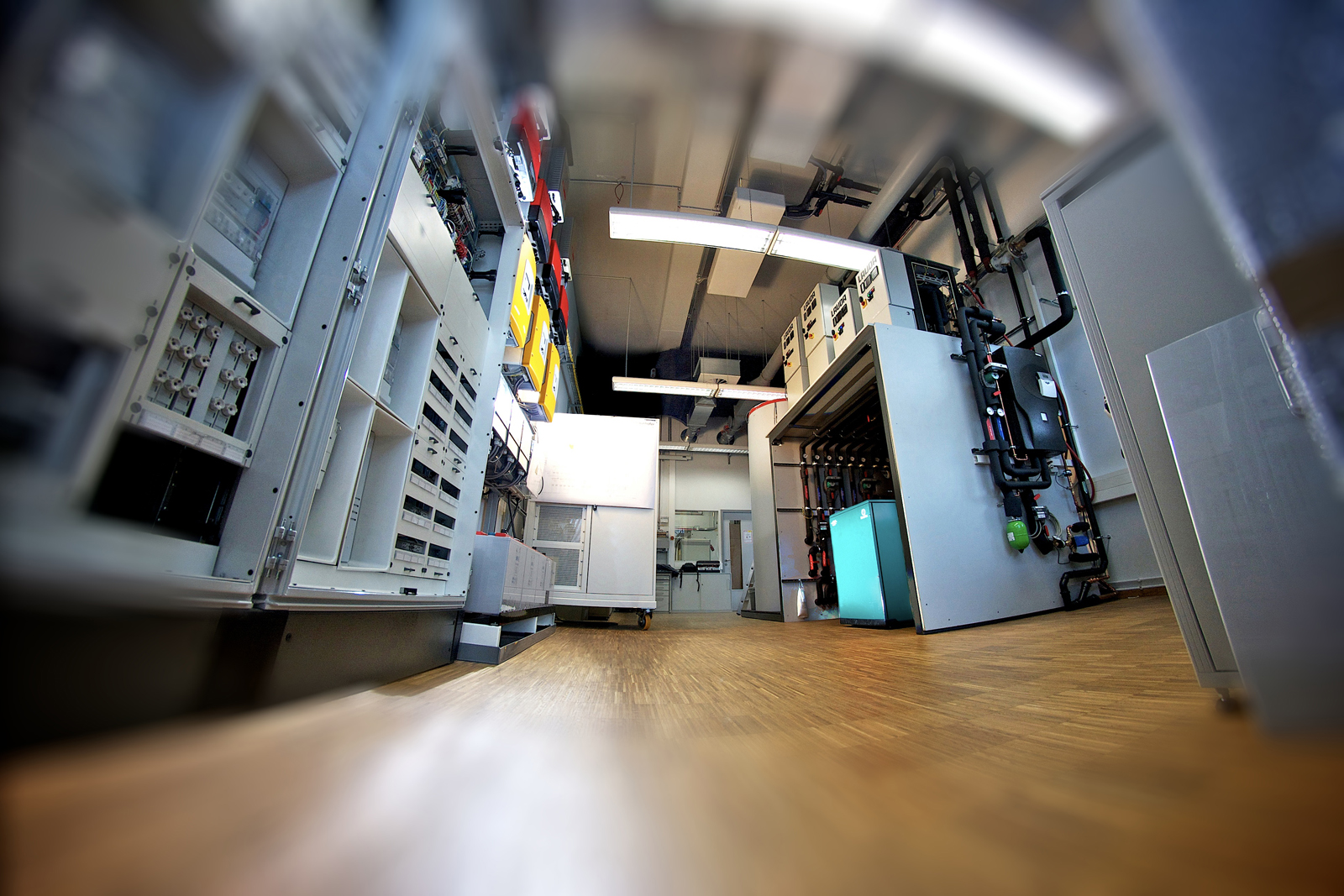SmartEnergyLab: Testing smart energy systems
The residential housing sector needs smart energy systems. And yet the potential for developing these kinds of systems remains largely untapped. In the SmartEnergyLab - an innovative test laboratory - Fraunhofer researchers are able to analyze, assess and develop almost any energy management system for controlling power and heat.
A smartphone is all it takes to turn the heating on or off at home. This might sound like science fiction to the average user, but it is not unusual for the scientists at the Fraunhofer Institute for Solar Energy Systems ISE in Freiburg. In an innovative test laboratory, the SmartEnergyLab, they are investigating how to network various electrical household appliances and operate them remotely. In the residential housing sector in particular there is still a great deal of potential for smart energy-management systems that are capable of tailoring local power generation and consumption optimally to the power grid: What is the best time of day for utilizing solar power? How can we store the energy produced and possibly feed it back into the power grid at a lucrative price? “Smart energy-systems technology for the consumer end of the distribution grid is the key to sustainable, secure energy supply,” explains Christof Wittwer, group manager at Fraunhofer ISE. By mapping all the thermal and electrical energy flows, the lab constitutes a unique platform for analyzing, assessing and developing smart homes and smart grid solutions for the distribution grid. “Basically, our lab is a simulator for potential energy systems for houses,” says Wittwer.
The lab is equipped with renewable as well as electric and thermal producers and storage devices for tomorrow’s single-family dwellings and apartment buildings. It boasts a stand-alone 5kW cogeneration plant, a two-cubic-meter buffer storage tank, a photovoltaic simulator, several PV inverters and various stand-alone inverters, a lithium-ion battery pack, a lead battery bank, a charging infrastructure for electric vehicles as well as other equipment. The combination of virtual and real components means researchers can simulate almost any energy system. For any given system they then assess and evaluate the potential energy savings for the customer associated with managing that system.
The service portfolio includes everything from “Integration assessment of thermal and electrical equipment in the system”, “Function and communications testing for energy management systems” to the “Efficiency assessment of energy management and generation equipment”. Energy suppliers and grid operators from across Germany are already leveraging the know-how of the Freiburg-based experts to determine the potential inherent in the decentralized management of this kind of equipment. Tariff models need to be assessed and their impact on the power grids investigated.
At the Hannover Messe from April 4 to 8, researchers on the joint Fraunhofer Energy Alliance booth in Hall 13, Booth C41 will be showcasing a small yet very sophisticated device: The Smart Energy Gateway – a component from the test lab – organizes the way in which data is shared between energy supplier and consumer. The smart box networks the power meters for heat, water and electricity and ensures that the right control function is used to increase efficiency based on current consumption figures and tariff information. But the Gateway is not just a networked meter and energy management optimization device: It can also be used to control household appliances or heaters and to program on/off times. When should the heat pump, the washing machine or the dishwasher come on? In future, one worry you won’t have when you’re on vacation is whether you forgot to switch the stove off.
